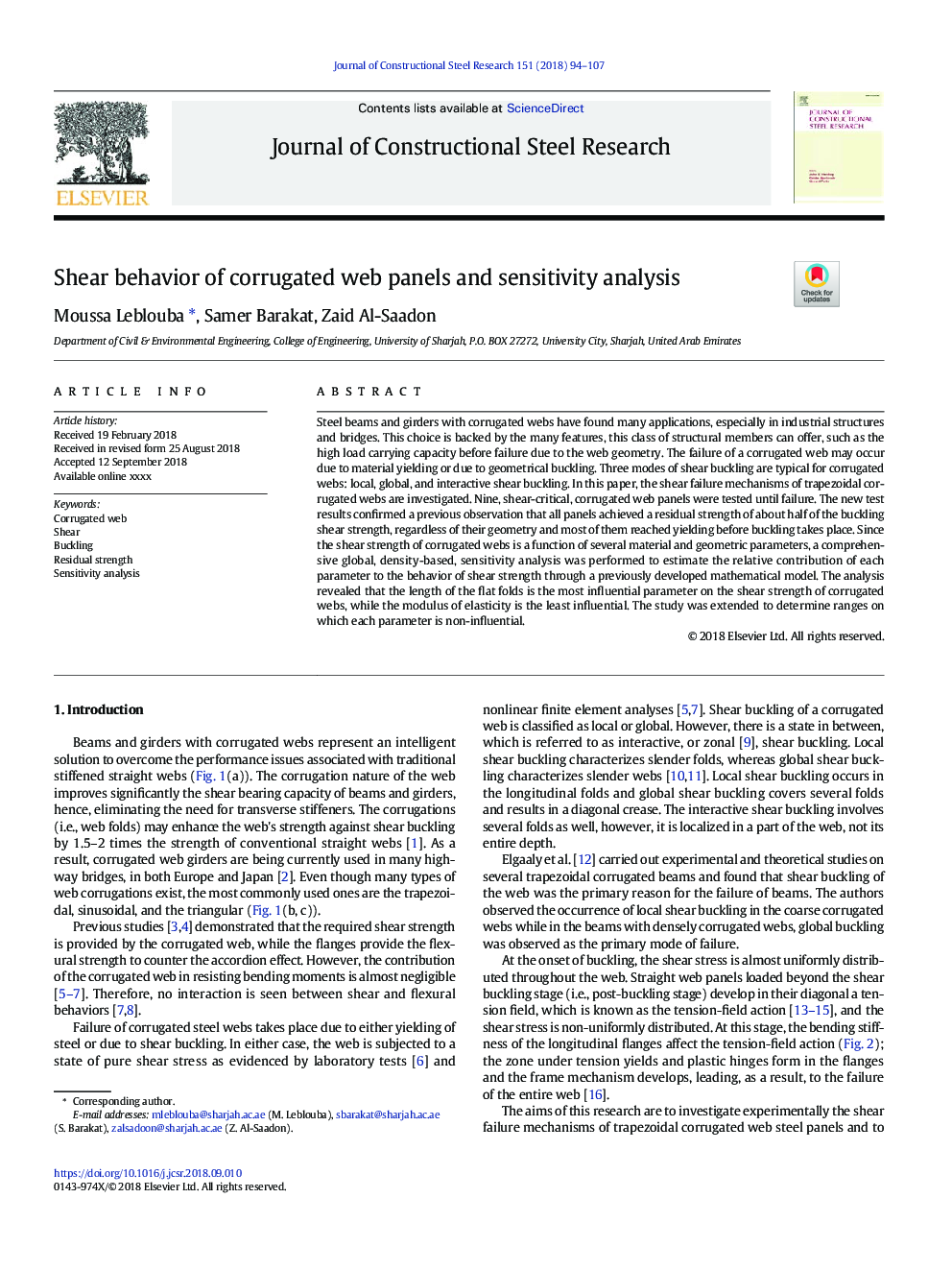| Article ID | Journal | Published Year | Pages | File Type |
|---|---|---|---|---|
| 10225406 | Journal of Constructional Steel Research | 2018 | 14 Pages |
Abstract
Steel beams and girders with corrugated webs have found many applications, especially in industrial structures and bridges. This choice is backed by the many features, this class of structural members can offer, such as the high load carrying capacity before failure due to the web geometry. The failure of a corrugated web may occur due to material yielding or due to geometrical buckling. Three modes of shear buckling are typical for corrugated webs: local, global, and interactive shear buckling. In this paper, the shear failure mechanisms of trapezoidal corrugated webs are investigated. Nine, shear-critical, corrugated web panels were tested until failure. The new test results confirmed a previous observation that all panels achieved a residual strength of about half of the buckling shear strength, regardless of their geometry and most of them reached yielding before buckling takes place. Since the shear strength of corrugated webs is a function of several material and geometric parameters, a comprehensive global, density-based, sensitivity analysis was performed to estimate the relative contribution of each parameter to the behavior of shear strength through a previously developed mathematical model. The analysis revealed that the length of the flat folds is the most influential parameter on the shear strength of corrugated webs, while the modulus of elasticity is the least influential. The study was extended to determine ranges on which each parameter is non-influential.
Related Topics
Physical Sciences and Engineering
Engineering
Civil and Structural Engineering
Authors
Moussa Leblouba, Samer Barakat, Zaid Al-Saadon,
